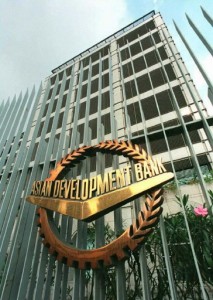MANILA, Philippines – Microfinance needs to reach more of the poor in Asia and the Pacific, but do so in a financially sustainable way, says a new study from Independent Evaluation at the Asian Development Bank (ADB).
The study, Microfinance Development Strategy 2000: Sector Performance and Client Welfare, emphasizes the twin goals of microfinance—reaching the poor and being financially sustainable. With microfinance becoming increasingly commercialized in the region, the study stresses the role of government and agencies such as ADB in addressing the financial needs of the poor, while at the same time ensuring the institutional sustainability of microfinance providers.
“Despite the increasing popularity of microfinance in recent years, expanding the access of poor households to institutional financial services remains a great challenge to governments and development agencies,” says the Director General of Independent Evaluation, Vinod Thomas.
The study finds that the penetration of microfinance among the poor in Asia and the Pacific remains low. As of the end of 2010, some 20% of the population living below the poverty level of $1.25 per day had direct access to microfinance services in 21 developing countries receiving ADB microfinance support. This level was below ADB’s goals.
Microfinance is seen in the region as an important means to helping low-income households take advantage of economic opportunities and improve living standards. But the degree to which it actually reaches the poor and improves their welfare is under public scrutiny.
A review of two programs in Pakistan and Viet Nam points to an apparent tradeoff between targeting and effectiveness of microfinance. Smaller loans were better at targeting the poor, but less effective than larger loans in producing welfare benefits. In the Pakistan program, the average loan was $195 but reached substantially more borrowers living below the national poverty line than in the Viet Nam program, where the average loan was $1,972. The study found more positive direct and indirect welfare benefits in the Viet Nam program than in the Pakistan program.
The study says that for microfinance to have a greater impact on reducing poverty in the region, it needs to better target the poor and focus more on educating them in using basic financial services, as well as more effectively link microfinance services to complementary pro-poor interventions.
ADB is one of the largest providers of microfinance support in the region. Between 2000, when ADB launched its microfinance development strategy, and 2010, it approved nearly $2.8 billion through 88 loans, grants, technical assistance operations, and private sector investments.
The main thrust of ADB’s interventions has been to ensure access to financial services for a majority of poor and low-income households and their microenterprises by focusing on programs and strategies to integrate microfinance into mainstream financial systems. Over two-thirds of ADB’s microfinance portfolio supported the creation of an enabling policy environment for microfinance in recipient countries.
ADB’s support was relevant and responsive to the needs of countries for developing microfinance. It performed reasonably well in easing regulatory and policy constraints, and this worked most effectively in countries where the “government is committed to reforms, and where institutions, policies, and operating framework have been allowed to flourish,” says the report.
About 2.7 billion people worldwide, or 70% of the adult population in the world’s developing countries, have no access to formal financial services, such as savings or checking accounts. They represent a key and still largely untapped market segment for financial inclusion.
“Improvements in the policy environment and integrating microfinance in the formal financial sector do not automatically improve outreach to the poor. Deliberate and innovative approaches are needed to benefit more people currently not reached by traditional financial institutions,” says Thomas.
One area showing promise is combining access to financial services with livelihood programs, food aid, skills training and asset transfers that help people in extreme poverty to gradually move into sustainable livelihoods and become creditworthy for commercial microfinance.
Government-to-person payments also have the potential to become an effective means for financial inclusion, primarily through social transfers and wage and pension payments. These have already been implemented in Bangladesh, Cambodia, India, Indonesia, Pakistan and the Philippines. Technology-based solutions such as mobile phone and internet banking, payment cards, and electronic money can help microfinance institutions reduce operating costs and expand the reach of their services.
“By and large microfinance has become an industry and is operating on a market basis in many countries,” says the principal author of the evaluation Binh Nguyen. “Far more attention must be given to the financial literacy of the poor, consumer protection, and accountability to customers to ensure sound microfinance practices and that the poor have access to safe financial services.”
ADB’s efforts have so far concentrated largely on addressing policy issues. The study calls for a greater focus on clients and the use of financial innovation and technologies to better reach the poor, among other measures for the viable and sustainable expansion of microfinance in the region.
